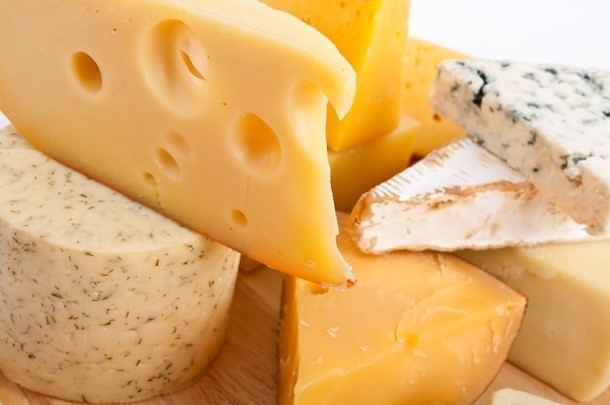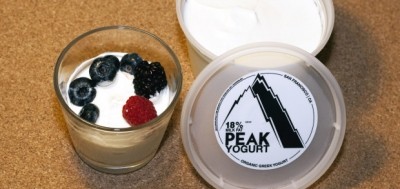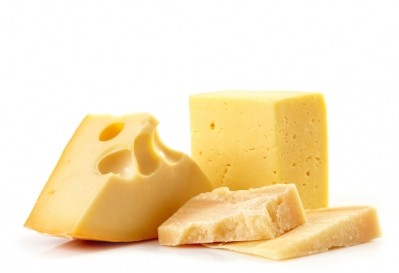Cheese could be the next health food, industry expert suggests

For years, cheese has been demonized as a food high in saturated fat, which could raise cholesterol levels and heart disease risks, and as high in sodium, which threatens to elevate blood pressure levels. But emerging science is poking holes in these arguments, creating an opportunity for cheese to be “the next naturally functional success story,” Julian Mellentin, director of New Nutrition Business, says in a report released this month.
“A key thing for cheese marketers is to actually challenge all the negatives that are put out about cheese in relation to sodium and fact,” he told FoodNavigator-USA.
To do that, he points to scientific studies published in the last few years that undermine the current negative messages about cheese as an unhealthy food.
For example, a study published in the American Journal of Clinical Nutrition in 2011 found a negative correlation between cheese intake and BMI, casting doubt on the idea that the saturated fat content in cheese could lead to weight gain.
Additional studies published in 2014 in the British Medical Journal, Advances in Nutrition and the journal Nutrition, Metabolism and Cardiovascular Diseases suggest the high sodium content in cheese does not increase blood pressure because of the “whole food matrix” in which it is delivered, Mellentin said.
“Nutritional science, like all sciences, is constantly evolving. In the past, studies focused on analyzing individual nutrients and their effects on the body. Now, there is a growing tendency to look at foods and food groups as a whole, without pre-judgements based on their content of an individual content of an individual nutrient,” Joana Maricato, an analyst at New Nutrition Business, told FoodNavigator-USA.
“As a consequence,” she added, “amazing results are appearing from studies on dairy and particularly cheese, proving that the combination of nutrients in cheese has many promising health benefits that were never considered in the past.”
An emerging marketing opportunity
The shifting science surrounding cheese is creating a substantial marketing opportunity for the category, which already touches on several of the key trends driving food sales, such as high protein, low sugar, low lactose and naturally functional products, Mellentin said.
In addition, he noted that “America is the biggest opportunity in the world for increasing cheese consumption. Americans eat just 14 kg each year, about half of France’s per capita consumption of 26 kg, so there is massive scope for growth.”
Marketers can take advantage of this potential by educating consumers and health care providers about the evolving science surrounding cheese, Mellentin said.
They also should literally repackage cheese to make it more desirable and easier to eat, he suggested. “If the industry does lots of sampling so people can experience different cheese and they are not sold in big blocks, but in small, nicely packaged blocks – and perhaps sold in combination with nuts and fruit – then there is a chance to revolutionize cheese consumption in America,” similar to how the introduction of Greek yogurt prompted massive growth in the category.
Cheesemaker Sargento Foods’ recently-launched Balanced Breaks snack line is an example of a product that is innovative and taking advantage of the evolving image and sales potential of cheese, Mellentin said. The line includes on-the-go packages that combine cheese, nuts and dried fruit and is sold at a premium price.
Lessons from the almond industry
Cheese marketers should tear a page playbook of the almond industry, which also was once demonized for high-fat content but is now viewed as a health food that is growing 30%, Mellentin said.
Specifically, cheesemakers should:
- Promote taste – The 2011 launch of Silk Almond milk helped WhiteWave Foods reach more households because the taste of almond milk was more desirable than soy milk. Cheesemakers, likewise, should look for ways to improve the taste of their products or better tell the story of the cheese flavors.
- Build a health halo around cheese – The Almond Board of California invested heavily in the late 1990s in research to show the health benefits of Almonds, eventually resulting in FDA issuing a qualified health claim for several nuts that helped consumers understand and trust health messaging around the food. Cheesemakers also could invest more heavily in research and promoting positive findings.
- Provide new, more convenient formats – Almond sales grew in part because Blue Almond created new products, such as Nut Chips, nut crackers, snack packs with bold, new flavors and milk. Cheesemakers similarly could include the ingredient and a variety of new snacks and products.
- Work with retailers to improve merchandising – Part of Silk’s success is due to its being repositioned from a shelf stable product sold in the store-center to a fresh food in the refrigerator section along the perimeter of the store. Cheesemakers should consider how to increase facings and create cross-marketing opportunities throughout the store.
Interested in new dairy trends? Register below for FoodNavigator-USA's LIVE 60-minute online Dairy Innovation Forum on July 29.


















